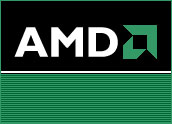
AOL on Friday will launch the beta version of a free portal designed to let customers view and share videos across the Web.
AOL Video includes roughly 45 new video-on-demand content channels, organized and accessible through video search, browse or an interactive programming guide; free streaming content; the ability to purchase and download full-length content viewable both on- and offline via multiple devices and PCs; and access to millions of music videos, news clips, movie trailers and full-length TV shows.
Some of the features include AOL Video Search, which is based on technology from the company’s Truveo and Singingfish acquisitions, and a video player that the company says can go to full screen without losing picture quality. The portal also includes AOL’s new UnCut Video offering, which allows customers to upload and share videos online directly from their camcorder, Webcam, video-enabled mobile phone or PC.
The portal appears to have a good shot at success, in light of the fact that most consumers still have yet to tap into the online video space.
“Yahoo and Google have taken various [steps] toward video search but I don’t think anyone is the one-stop shop yet. There’s still a big opportunity in the marketplace for AOL to become that,” Joe Laszlo, senior analyst at JupiterResearch, told TechNewsWorld.
“There still needs to be some training that video is something you can search for, too, and AOL has an opportunity,” he added. “The idea you’ll be able to search against the Web is something consumers will have to learn — but the behavior is coming, and the timing is good.”
Target Audience
Most people who watch video stumble upon it — when it’s added to regular content on a news site, for example — or they go to a destination likeYouTube.
YouTube is currently the No. 1 destination for people wanting to post their own videos where they’ll be exposed to a wider audience, Laszlo said.
“YouTube has built an audience and might be a challenge for other user-created video sites to break into the market,” he acknowledged. “Yet, for all YouTube’s explosive growth, there’s a huge amount of the online market who’s not going [there].”
The online video market may be dominated by the typical young male segment known to be early technology adopters. However, AOL may have the opportunity to become their mothers’ video portal — providing a broader range of content and attracting new demographics that might not have experimented with video-sharing technology yet.
“We’re focused on reaching a mass-market audience. We’re not isolating one particular demographic,” Fred McIntyre, vice president of AOL video, told TechNewsWorld. Uncut Video lets the younger, more tech-savvy crowd express themselves — and with AOL’s instant messenger boasting 43 million active users, the channel exists to reach them, he said.
For the older audience, AOL already has teamed with Warner Bros. and launched the In2TV broadband network featuring free viewing of dozens of old television shows like “Babylon Five.” Additionally, AOL Coaches provide lifestyle self-improvement programming.
“It’s less about changing what we’re doing and more about shining a light on all of the things we are doing,” McIntyre said. “Our goal is to get people into the AOL video experience as a starting point, and then that activity exposes them to a range of things.”
Programming Guide
The company also is highlighting an online interactive programming guide (IPG) that will be featured on the portal’s main page and will feature paid and ad-supported content. Consumers may not realize it yet, but that assistance may prove invaluable.
“People don’t think of the Web needing an electronic programming guide, but that behavior is coming. We’re likely to meet a point in the future where the mainstream wants it,” Laszlo said. “Building a portal that combines search and video programming is something AOL knows how to do well in the classic Web-portal world, and consumers are looking [for it] in the video-oriented broadband world.”
Directories were part of the way people navigated the Internet before search engines, but with tens of thousands of videos coming online every day, it is unmanageable to provide a relevant list to consumers, McIntyre explained.”We believe video search is fundamentally different from text search [and] it will be the way people will be connected to the video world [in the future]. We’re focused on making it a central part of the experience.”











































